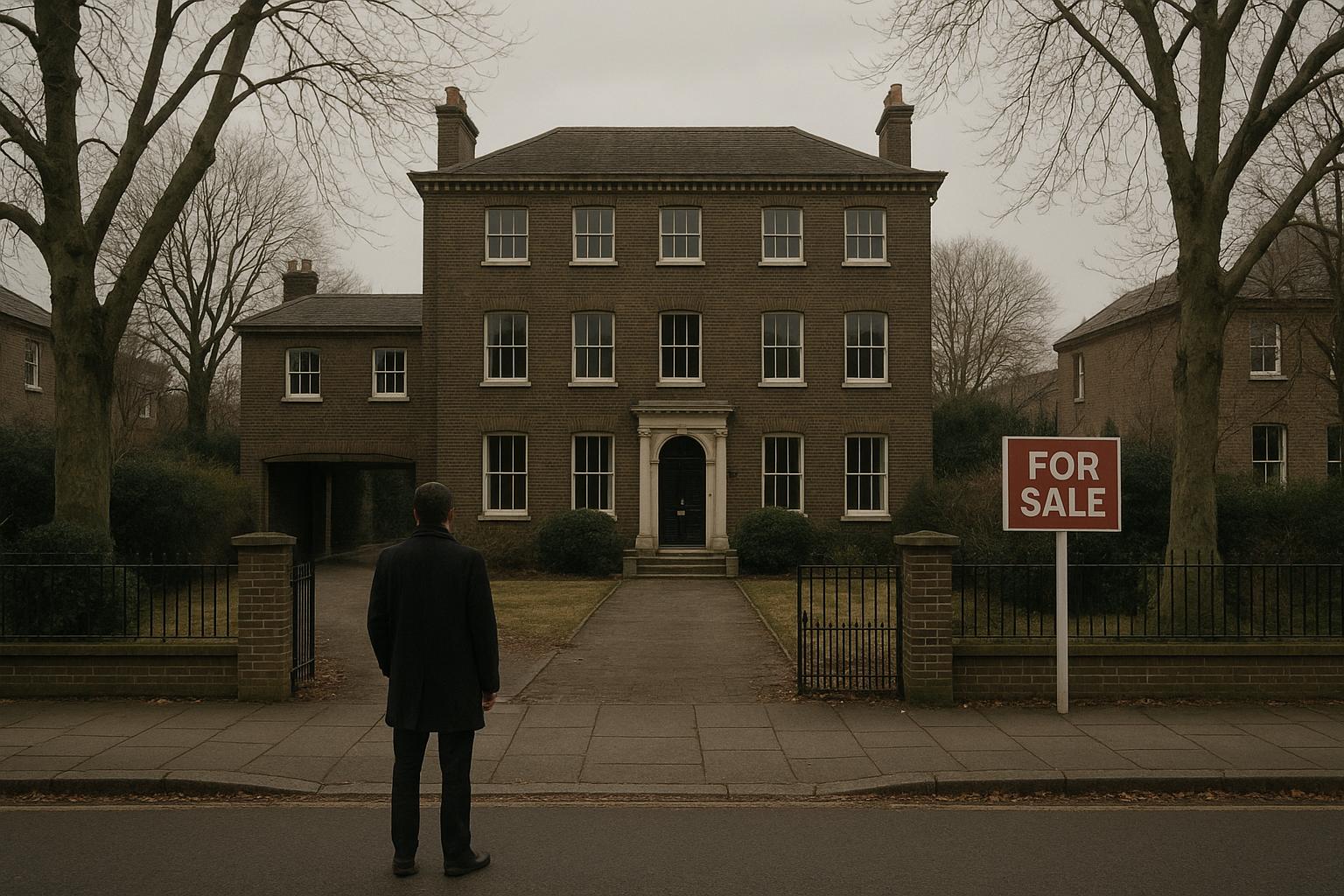Activity in London’s high-end housing market, particularly for properties priced above £5 million, remains subdued amid growing anticipation ahead of the upcoming Budget, according to property firm Savills. Their latest analysis reveals that Q3 2025 saw just 93 sales in this segment, marking an 18% decline from the same period in 2024. Despite this dip, the market remains notably buoyant compared with pre-pandemic levels, with transactions 72% higher than 2019 figures. However, spending on homes over £5 million has dropped 15% year-to-date, largely dragged down by a significant decrease in sales of properties exceeding £10 million.
Frances McDonald, director of residential research at Savills, explained that while the summer is usually quieter for London’s ultra-prime market, recent months have shown a sharper slowdown, especially at the very top end. She observed that demand for properties priced between £5 million and £10 million is only slightly down, but sales above £10 million have weakened more markedly. This trend is partly attributed to the shrinking pool of buyers following the end of the non-dom regime. Many potential purchasers are now adopting a cautious wait-and-see approach until the government’s forthcoming Budget clarifies the tax landscape. Nonetheless, McDonald highlighted persistent interest from opportunistic buyers eager to capitalise on any attractive valuations.
Geographically, Kensington has emerged as the leading hub for ultra-prime sales, accounting for 12% of transactions over £5 million, overtaking Chelsea and Belgravia, which each hold 10%. These traditional prime central London areas, including Mayfair, together represent 42% of high-value sales so far in 2025, down from 48% last year. This indicates a diversification of buyer interest into neighbourhoods such as Notting Hill, Bayswater, South Kensington, and Marylebone. Richard Gutteridge, co-head of Prime Central London at Savills, noted that domestic purchasers—often seeking main residences—are increasingly active, benefiting from softer prices and reduced competition. This shift has led to stronger demand for second-hand houses typically less popular with international investors.
Despite a modest increase in unsold stock, there has been no flood of new listings since the new government's initial Budget, reflecting the enduring appeal of London’s prime property market. Gutteridge also pointed to ongoing multi-million pound transactions exceeding £30 million for exceptional homes, underscoring London’s lasting attraction to global elite buyers, even amid market fluctuations.
Looking back, the market demonstrated resilience in the latter part of 2024. In Q4 of that year, £5 million-plus sales in London increased by 25% from the previous quarter, reaching 128 transactions with a total value of £1.59 billion—the highest since 2019. This strong finish implied renewed buyer confidence despite earlier caution due to political uncertainties and tax changes.
More broadly across 2025, the UK property market has experienced a notable decline in asking prices, with July witnessing the sharpest drop for that month in over two decades. An average fall of 1.2% brought prices to around £373,709, attributed primarily to greater property availability rather than a broad market downturn. Despite this, sales agreements rose by 5% year-on-year, signalling robustness amid shifting conditions.
Looking ahead, forecasts from Capital Economics suggest London’s house prices could outperform the rest of the UK, with an expected increase of around 6.5% over the next year, compared with a 5% national average. Factors driving this outlook include falling mortgage rates, easing lending criteria, and restricted housing supply in London. However, some analysts warn that affordability issues and uneven demand across different parts of the capital may temper this growth.
Meanwhile, in prime London zones, recent data from Savills indicates a degree of resilience despite the pre-Budget jitters over potential property tax reforms. New listings even rose 4% in Q3 2025, signalling some seller confidence. Price declines have been modest in outer prime areas, with falls contained to around 0.7% over three months, suggesting stability within certain market segments.
In summary, while the top tier of London’s luxury housing market has slowed amid policy uncertainty and buyer caution, particularly above £10 million, there remains substantial underlying demand. Domestic buyers are stepping forward as some international interest wanes or shifts, and pockets of exceptional properties continue to attract ultra-high-net-worth individuals. The upcoming Budget will be a critical milestone to watch, potentially shaping the market’s direction for the remainder of the year.
📌 Reference Map:
- Paragraph 1 – [1] (Property Investor Today), [2] (Savills Q3 2024 report)
- Paragraph 2 – [1] (Property Investor Today)
- Paragraph 3 – [1] (Property Investor Today)
- Paragraph 4 – [1] (Property Investor Today)
- Paragraph 5 – [1] (Property Investor Today), [3] (Savills Q4 2024 report), [4] (Savills news)
- Paragraph 6 – [5] (MoneyWeek data), [1] (Property Investor Today)
- Paragraph 7 – [6] (Capital Economics forecast), [1] (Property Investor Today)
- Paragraph 8 – [7] (Savills Q3 2025 report), [1] (Property Investor Today)
Source: Noah Wire Services
